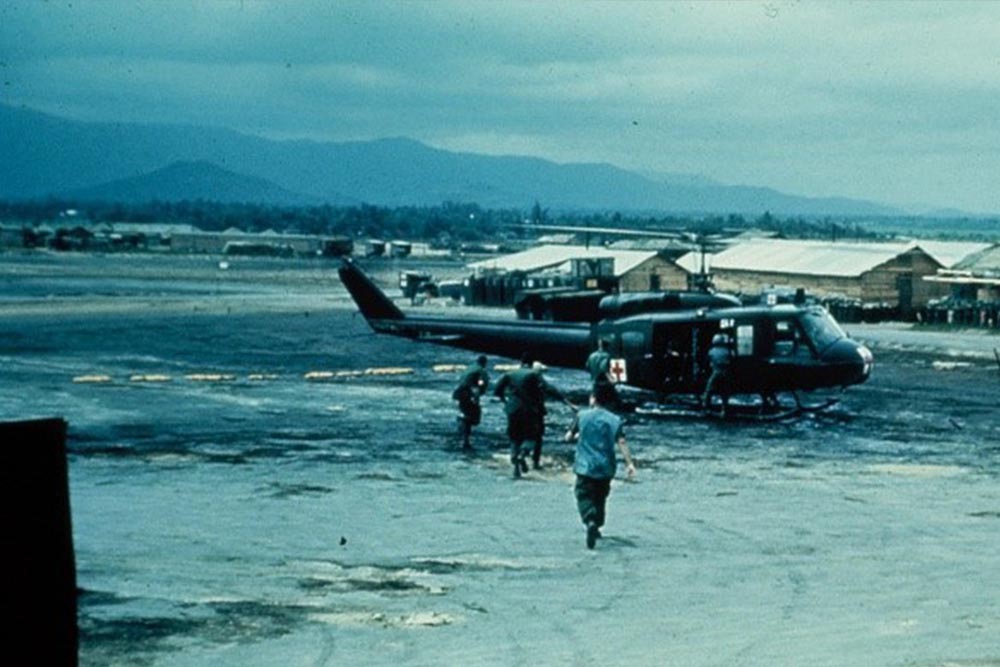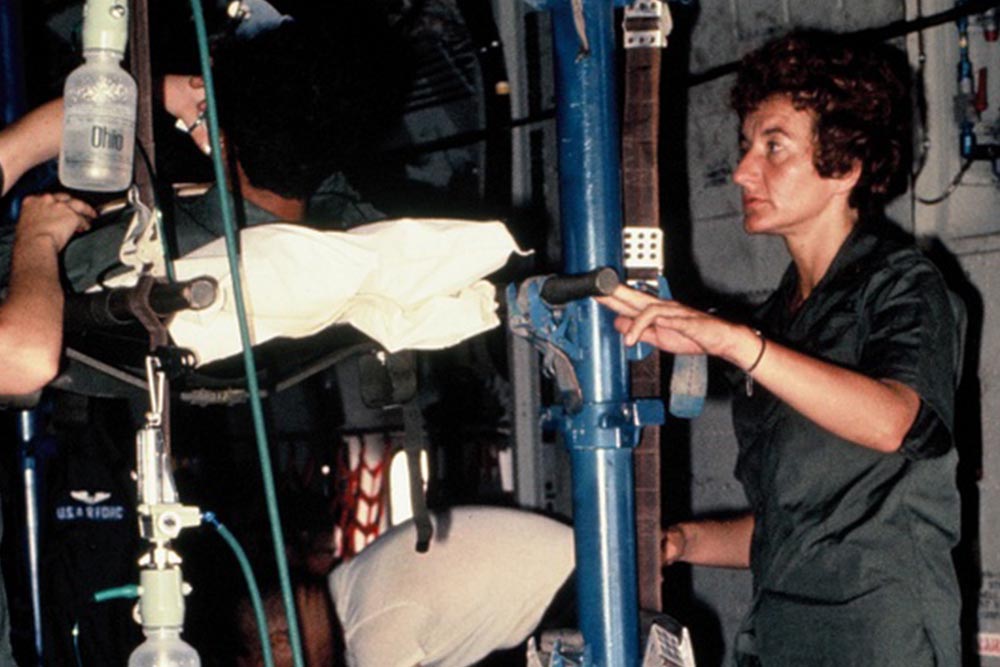
Nursing During the Vietnam War: the Dianne M. Gagliano Collection
No official record exists of the number of nurses who served in Vietnam during the war.
9,000 nurses
About 9,000 military nurses served during the Vietnam War
They were a largely invisible and unrecognized contingent of an unpopular war until their stories slowly began emerging with the advent of the Vietnam Women’s Memorial Project in the mid-1980s. Today, it’s estimated that 10,000 American military women were stationed in Vietnam, 90 percent of them nurses.
Dianne M. Gagliano deployed to Vietnam in 1971, shortly after earning flight nurse certification from the U.S. Air Force School of Aerospace Medicine in San Antonio, Texas. She flew medical and humanitarian missions all over Southeast Asia, caring for critically injured troops and airlifting prisoners of war and orphaned children.




“We flew at all hours of the day and night and would cross ten time zones en route to the West Coast, as well as cross over the International Date Line,” recalled Gagliano, whose papers are archived in the Bjoring Center for Nursing Historical Inquiry. “Our circadian rhythms were constantly disrupted and left us mentally dull for much of our duty day.”
Combat casualties were airlifted to a U.S. Air Force medical center hub along Vietnam’s coast. Critically injured patients—such as those with head and spinal cord injuries—were flown back to the U.S. for treatment. “We had to anticipate each patient’s needs and ensure that all special equipment, needed supplies, and medications were provided in sufficient quantity for the duration of each patient’s flight,” she said. No diversions were made for medical emergencies on these trans-Pacific crossings, which meant nurses had to improvise when supplies ran out.
“We flew at all hours of the day and night and would cross ten time zones en route to the West Coast, as well as cross over the International Date Line. Our circadian rhythms were constantly disrupted and left us mentally dull for much of our duty day.”
Flight nurse Dianne Gagliano, who served during the Vietnam War and whose papers are archived at the Bjoring Center
A C-141 cargo aircraft transported patients out of Vietnam, holding 44 “litters” (stretchers with sides) and 48 ambulatory patients. “With metal flooring and side walls, little or no insulation, and limited cargo lighting, it made for a noisy, dimly lighted, and uncomfortable thermal environment to work in during the long flights,” Gagliano recollected. Ear plugs were essential against the din, which further impeded the nurses’ ability to communicate with patients and fellow crew. Because they often could not hear a respirator cycling or suction machine operating, the nurses had to closely monitor patients to ensure the equipment was working effectively.
Medical personnel dealt with extraordinary injuries that were inflicted by weapons specifically designed to mutilate and maim. More than 58,000 soldiers died in Vietnam; 350,000 were wounded.
“Our greatest asset was that we were transporting the healthiest patient population that a medical team could hope for—at least 90 percent were in their twenties,” Gagliano reflected. “I encountered only one in-flight death among the more than 1,000 patients that I transported during my years in Vietnam.”

